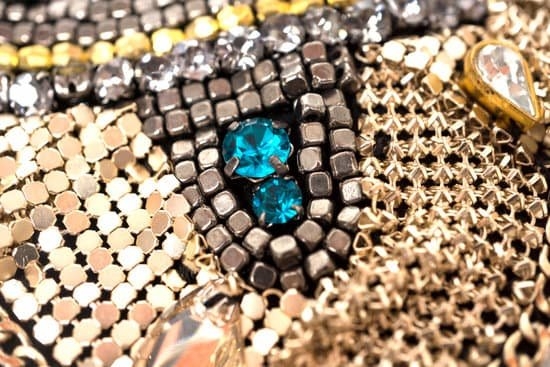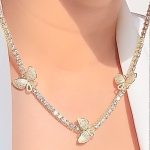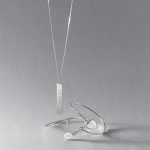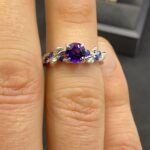Bead jewelry making is an incredibly popular craft trend that has captivated the attention of both beginners and seasoned artisans alike. With its endless possibilities for creative expression, bead jewelry allows individuals to showcase their personal style through unique and one-of-a-kind pieces. Whether you are looking to create stunning necklaces, intricate bracelets, or eye-catching earrings, learning how to make bead jewelry is a skill that can bring joy, fulfillment, and a sense of accomplishment.
What sets bead jewelry apart from other crafts is its versatility, accessibility, and affordability. Beads come in a wide variety of materials, shapes, sizes, colors, and finishes, making it easy to find options that suit your individual taste and aesthetic preferences. From glass beads to gemstone beads to wood beads and more, there are limitless combinations and design possibilities waiting to be explored.
In addition to its accessibility in terms of materials, making bead jewelry requires minimal tools and can be done right from the comfort of your own home. Whether you are a beginner just starting out or an experienced crafter looking for a new hobby or project idea, bead jewelry making offers endless opportunities for creativity and self-expression.
So why not dive in headfirst into this fascinating craft trend? Get ready to unleash your creativity as we dive into the world of bead jewelry making together.
Gathering Your Supplies
Before you dive into making beautiful bead jewelry, it’s important to gather all the necessary tools and materials. Having everything on hand will make the process much smoother and more enjoyable. Here is a comprehensive list of bead jewelry making tools and materials that you will need:
Tools
- Wire cutters: Used to cut and trim wires.
- Pliers: Essential for opening and closing jump rings, attaching clasps, and bending wires.
- Crimping tool: Used to secure crimp beads or tubes.
- Beading needles: Thin needles with a narrow eye specifically designed for stringing beads.
- Thread or beading wire: Depending on your preference, choose a strong thread or flexible beading wire suitable for your project.
- Jewelry glue: A clear adhesive used for securing knots or attaching certain elements like decorative embellishments.
Materials
- Beads: The most important element of your jewelry. Choose from a wide variety of sizes, shapes (round, square, cylindrical), materials (glass, gemstone, wood), colors, finishes, and textures to suit your design.
- Jump rings: Small metal rings used to connect different components of your jewelry such as clasps or pendants to the main piece.
- Clasps: Fasteners that secure your jewelry around the neck or wrist. Choose from lobster clasps, toggle clasps, magnetic clasps, etc., depending on the design of your piece.
- Crimp beads/tubes: Small metal beads or tubes used to secure the ends of the beading wire or thread.
- Spacer beads: Small beads used to separate and highlight other beads in your design.
- Charms and pendants: Decorative elements that add personality and style to your jewelry. Choose from a wide range of shapes, symbols, and materials to suit your taste.
By having these tools and materials ready, you will be well-equipped to begin your bead jewelry making journey. Having a diverse collection of beads and elements will allow you to experiment with different designs, colors, and textures, resulting in unique pieces that reflect your personal style. So gather your supplies and get ready to unleash your creativity.
Choosing the Right Beads
Choosing the right beads for your jewelry designs is essential to create beautiful and cohesive pieces. With so many different types, shapes, and sizes of beads available, it can be overwhelming to know where to start. This guide will help you navigate the world of beads and provide you with the knowledge you need to choose the perfect ones for your projects.
Types of Beads
- Seed Beads: These small, uniformly shaped beads are often used in bead weaving and embroidery. They come in a variety of sizes, ranging from tiny 15/0 beads to larger 6/0 beads.
- Glass Beads: Glass beads are popular due to their versatility and wide range of colors and finishes. They can be smooth or faceted, transparent or opaque.
- Gemstone Beads: Made from natural materials such as crystals, gemstones offer unique patterns and colors. Popular gemstone options include amethyst, jade, turquoise, and quartz.
- Pearls: Known for their elegance and timeless appeal, pearls make stunning jewelry pieces. They can be freshwater or saltwater pearls with various shapes like round, button, or teardrop.
Bead Shapes
- Round Beads: The most common bead shape that works well in a variety of designs.
- Cube Beads: Square-shaped beads that add a modern touch to jewelry designs.
- Bicone Beads: Shaped like an elongated diamond with two cone-shaped ends.
- Rondelle Beads: Donut-shaped beads that are often used as spacers between larger beads.
Bead Sizes
- The size of seed beads is measured by numbers; the smaller the number, the larger the bead. For example, a 15/0 seed bead is smaller than an 8/0 seed bead.
- Other beads, such as gemstones and glass beads, are measured in millimeters. The size can vary greatly, ranging from tiny 2mm beads to large 20mm beads.
By understanding the different types, shapes, and sizes of beads available, you can choose the perfect ones for your jewelry designs. Experiment with different combinations to create unique and visually appealing pieces that reflect your personal style. Remember to consider factors such as color coordination and texture when selecting beads to ensure a harmonious overall design.
Basic Bead Stringing Techniques
Creating your own bead necklaces can be a rewarding and enjoyable craft activity. Not only does it allow you to express your creativity, but it also enables you to make personalized pieces of jewelry that reflect your style and personality. In this section, we will guide you through the basic bead stringing techniques that will help you create beautiful and stunning necklaces.
To begin with, let’s gather our supplies. You will need a few essential tools and materials for bead stringing. These include beading wire or thread, beads of your choice, crimp beads or tubes, jump rings, clasps, pliers (such as flat-nose and crimping pliers), scissors, and a ruler or measuring tape. Having these tools readily available will ensure that you have everything you need to start creating your necklace.
Once you have gathered your supplies, it’s time to choose the right beads for your project. Consider the type, shape, and size of beads that best suit the design you have in mind. There are various options to explore such as glass beads, gemstone beads, seed beads, metal beads, or even wooden beads.
Each type of bead offers its own unique qualities and attributes that can enhance the overall look of your necklace. Take some time to experiment with different combinations and textures until you find the perfect mix.
Now that you have your supplies ready and chosen the perfect beads for your necklace design let’s move on to the basic bead stringing techniques. The first step is to determine how long you want your necklace to be and cut an appropriate length of beading wire or thread. Remember to add extra length for attaching clasps and knots at both ends.
String one end of the wire or thread through a crimp bead or tube followed by a jump ring or clasp looped back through the crimp bead or tube. Use your flat-nose pliers to squeeze the crimp bead or tube, securing the jump ring or clasp in place. Repeat this process at the other end of the wire or thread.
To add beads to your necklace, slide them onto the wire or thread in your desired pattern and order. You can create a simple design by stringing beads in a repeating pattern or mix different types of beads for a more eclectic look.
Experiment with spacing between beads to achieve the desired visual appeal. Once all the beads are added, secure the other end of the necklace in the same manner as before, using a crimp bead or tube and a jump ring or clasp.
By following these basic bead stringing techniques, you are well on your way to creating stunning necklaces that reflect your personal style. Practice different patterns and combinations to expand your skills and develop unique designs that truly stand out. Whether you choose to keep them for yourself or gift them to loved ones, these handmade necklaces will be cherished for their beauty and the love put into making them.
Mastering Bead Weaving
Bead weaving is an intermediate level technique that allows you to create intricate and detailed designs in your bead jewelry. While basic bead stringing techniques involve threading beads onto a string or wire, bead weaving involves using a needle and thread to stitch beads together using various stitches and patterns. With bead weaving, you have the flexibility to create woven bracelets, earrings, and even components that can be incorporated into larger jewelry pieces.
One popular bead weaving technique is peyote stitch, which creates a beautiful textured pattern with alternating rows of beads. To start, you will need a beading needle, beading thread, and seed beads in your desired colors. The peyote stitch begins with creating a base row of beads in a flat or circular shape. You then continue by adding additional rows of seed beads, stitching them through the previous row of beads.
Another common bead weaving technique is right angle weave (RAW), which creates a more structured and geometric look in your designs. Similar to peyote stitch, it involves stitching rows of beads together using thread and needle. However, with right angle weave, the thread passes through each individual bead multiple times to create interlocking units.
Incorporating different types of stitches and patterns into your bead weaving projects can lead to endless possibilities for creativity. You can experiment with different color combinations, shapes of beads such as bicone or cube beads for added texture and dimensionality, and even mix different stitches together to create unique designs.
Mastering the art of bead weaving may take practice and patience, but once you become familiar with different techniques and patterns, you’ll be able to create stunning bracelets and earrings that showcase your skill as a bead jewelry maker.
| Bead Weaving Techniques | Description |
|---|---|
| Peyote Stitch | A popular bead weaving technique that creates a textured pattern with alternating rows of beads. |
| Right Angle Weave (RAW) | A structured and geometric bead weaving technique that involves interlocking units created by stitching rows of beads together. |
| Mixed Stitches | Experimenting with different stitches and patterns to create unique designs in your bead weaving projects. |
Adding Special Touches
Incorporating charms, pendants, and decorative elements into your bead jewelry designs can take your pieces to the next level. These special touches add personality, meaning, and unique focal points to your creations. Whether you want to create a sentimental piece for yourself or a meaningful gift for someone else, using charms, pendants, and other decorative elements allows you to infuse emotion and style into your designs.
When it comes to adding special touches to your bead jewelry, there are a wide variety of options available. Charms are small decorative pieces that typically hang from a bracelet or necklace and can represent personal interests or symbolize significant milestones or memories.
Pendants, on the other hand, are larger decorative components that serve as the main focus of a jewelry piece. They come in various shapes and designs and can be made from a variety of materials such as metal, gemstones, glass, or even polymer clay.
To incorporate charms, pendants, and decorative elements into your bead jewelry designs effectively, consider the following tips:
- Choose appropriately sized charms and pendants: When selecting these components for your design, make sure they complement the size of the beads you’re working with. If you’re using smaller beads, opt for charms that are dainty and won’t overpower the overall look. For larger beads, choose pendants that are substantial enough to make a statement.
- Coordinate colors and themes: To create cohesive designs that flow seamlessly, consider matching the colors of your charms or pendants with the color scheme of your overall piece. Additionally, you can choose charms or pendants that align with specific themes such as nature-inspired elements or symbols that hold personal significance.
- Experiment with placement: Don’t be afraid to get creative with how you incorporate charms and pendants into your jewelry designs. They can be placed as single focal points in the center of necklaces or bracelets or evenly spaced along chains for a more balanced look. You can also use multiple charms or pendants together to create a layered effect or tell a story.
| Tips for Incorporating Special Touches: |
|---|
| Choose appropriately sized charms and pendants |
| Coordinate colors and themes |
| Experiment with placement |
By following these tips, you can add depth, meaning, and visual interest to your bead jewelry designs. Whether you choose to add sentimental charms that represent milestones in your life or eye-catching pendants that showcase your personal style, incorporating these special touches will make your bead jewelry truly unique and cherished.
Tips for Designing Unique Bead Jewelry
When it comes to designing bead jewelry, one of the most important aspects is creating unique and eye-catching pieces. In this section, we will explore some tips and techniques for balancing colors, patterns, and textures to help you create one-of-a-kind designs.
Understanding Color Theory
Color plays a crucial role in the overall aesthetic of your bead jewelry. Understanding color theory can help you create harmonious designs that are visually appealing. Start by familiarizing yourself with the color wheel and its different hues, shades, tints, and tones.
Consider using complementary colors – those that are opposite each other on the color wheel – to create contrast and make your designs pop. Additionally, experimenting with analogous colors – those that are adjacent to each other on the color wheel – can result in cohesive and pleasing combinations.
Exploring Pattern Options
Patterns can add depth and interest to your bead jewelry designs. There are various ways you can incorporate patterns into your pieces. One option is to use beads with intricate designs or patterns already incorporated into them. Another approach is to create patterns yourself by strategically arranging different beads. You can experiment with alternating colors or shapes, creating repeating motifs, or even incorporating different techniques like geometric patterns or chevron designs.
Mixing Textures for Added Dimension
Using beads with different textures can bring an extra dimension to your jewelry designs. Combining smooth and matte beads with shiny or faceted ones creates an interesting interplay between light and texture. You can also try mixing materials such as seed beads with gemstones or glass beads with metal accents to add variety in texture as well as visual interest.
Remember, designing unique bead jewelry is all about experimenting and finding what works best for you. Don’t be afraid to combine colors, patterns, and textures in unexpected ways; sometimes the most stunning pieces come from pushing boundaries and trying something new.
Finishing Touches
Choosing the Right Clasps
When it comes to finishing your bead jewelry, selecting the right clasps is crucial for both functionality and aesthetics. Clasps are used to secure your necklace or bracelet, ensuring that it stays fastened securely while you wear it. There are various types of clasps available, each with its own unique design and function.
One popular option is the lobster clasp, which features a small spring-loaded mechanism that opens and closes easily with a trigger-like lever. This type of clasp is versatile and commonly used in both necklaces and bracelets. Another common choice is the toggle clasp, which consists of a T-shaped bar that fits into a circular ring for secure closure. Toggle clasps can add an elegant touch to your bead jewelry and are often used in bracelet designs.
Securing Your Jewelry
Once you have selected the appropriate clasps for your pieces, it’s important to ensure that they are securely attached to your jewelry. One common technique is to use jump rings, which are small metal rings that come in various sizes and gauges.
They can be opened using pliers and used to connect the clasp to the ends of your beaded strands. It’s important to properly close jump rings so that there are no gaps where beads could slip through.
In addition to jump rings, crimp beads or tubes can also be used to secure stringing materials such as wire or cord in place. These tiny metal beads are flattened using crimping pliers or flat-nose pliers after they have been threaded onto the stringing material. This creates a tight grip on the material, preventing it from sliding out of place.
Polishing and Cleaning Techniques
To give your bead jewelry a professional finish, it’s important to polish any metal components such as clasps or charm attachments. A soft polishing cloth can be used to buff away any tarnish or fingerprints, restoring the shine to your jewelry. If your beads have become dirty or dull over time, a gentle cleaning solution can be used. Avoid using harsh chemicals or abrasives that could damage the beads.
For bead jewelry made from natural materials like pearls or gemstones, it’s important to take extra care when cleaning. These delicate materials should be cleaned with a mild soap and water solution, using a soft brush to gently scrub away dirt. Rinse thoroughly and pat dry with a soft cloth.
By following these finishing techniques, you can ensure that your bead jewelry not only looks elegant but also functions effectively and stands the test of time.
Caring for Your Bead Jewelry
Once you have created your beautiful bead jewelry pieces, it is important to know how to properly care for and store them to ensure their longevity. Bead jewelry can be delicate, and with the right maintenance and storage techniques, you can keep your pieces looking new and vibrant for years to come.
Firstly, it is essential to clean your bead jewelry regularly. Over time, dirt, oils, and other substances can build up on the surface of the beads, making them appear dull or cloudy. To clean your bead jewelry, start by gently wiping each individual bead with a soft cloth or microfiber towel.
If the beads are particularly dirty, you can use a mild soap diluted in water to gently wash them. Avoid using harsh chemicals or abrasive materials that could damage the beads or any metal components.
When it comes to storage, proper organization is key to prevent tangling or scratching of your bead jewelry. One effective method is to store each piece separately in a soft pouch or small plastic bag. This will help protect it from scratches caused by contact with other jewelry pieces. Alternatively, you can also hang necklaces or bracelets on hooks or small hangers to keep them untangled and easily accessible.
Additionally, be mindful of where you store your bead jewelry. Extreme temperatures and exposure to sunlight can cause fading or discoloration of certain types of beads. It is best to store your bead jewelry in a cool, dry place away from direct sunlight. Avoid storing them in areas with high humidity as this can cause damage to certain types of beads as well.
By following these simple maintenance and storage practices, you can ensure that your bead jewelry remains in excellent condition for years to come. Taking good care of your pieces not only preserves their beauty but also allows you to enjoy wearing them for many occasions in the future.
Conclusion
In conclusion, learning how to make bead jewelry is a rewarding craft that allows you to unleash your creativity and embark on a journey of self-expression. By following the steps outlined in this article, you can start creating stunning necklaces, bracelets, and earrings that reflect your unique style.
One of the key aspects of bead jewelry making is choosing the right beads. By familiarizing yourself with different types, shapes, and sizes, you can create designs that are visually appealing and harmonious. Experimenting with various colors, patterns, and textures will also help you design one-of-a-kind pieces that stand out.
As you progress in your bead jewelry making skills, don’t be afraid to explore intermediate techniques such as bead weaving. This allows you to create intricate designs for bracelets and earrings, adding another layer of complexity to your creations. You can also incorporate special touches such as charms, pendants, and decorative elements to add personalization to your jewelry.
To ensure the longevity of your bead jewelry, proper maintenance and storage are essential. Cleaning your pieces regularly with a soft cloth and keeping them in separate compartments will help prevent scratches and tangling. Additionally, familiarize yourself with clasp techniques to ensure the security of your finished pieces.
Overall, making bead jewelry is an enjoyable craft that offers endless possibilities for creativity. Whether you’re a beginner or have some experience with jewelry making, this hobby allows you to express yourself through wearable art. So gather your supplies, choose your beads wisely, and let your imagination soar as you embark on this exciting journey of bead jewelry making.
Frequently Asked Questions
What do you need to make beaded jewelry?
To make beaded jewelry, you will need a few essential materials. Firstly, you will need beads which can come in various shapes, sizes, and colors. These can be made of glass, plastic, wood, or even gemstones depending on your preference and the style of jewelry you want to create.
Additionally, you will require some stringing material such as wire or cord to thread the beads together. You may also need tools like pliers for bending and cutting wire, as well as clasps and connectors to finish off your pieces.
How do you make jewelry with beads?
Making jewelry with beads involves a series of steps that require creativity and attention to detail. Once you have gathered all the necessary materials, start by planning out your design or pattern for the piece you want to create. Next, cut the stringing material to an appropriate length based on the type of jewelry you are making (bracelet, necklace, earrings).
Begin threading your chosen beads onto the string in the desired order. Take care to secure any knots or clasps correctly to ensure durability and functionality. Finally, trim any excess stringing material and add finishing touches such as charms or pendants if desired.
How to start a bead making business?
Starting a bead making business requires careful planning and consideration of various aspects. Firstly, conduct market research to determine if there is a demand for your products in your area or online marketplace. This will help identify target customers and competitors that exist within the industry. Create a business plan that outlines your mission statement, target audience, pricing strategy, marketing plans, and financial projections.
Consider sourcing high-quality materials at reasonable prices from reliable suppliers to maintain product quality while keeping costs under control. Establish an online presence through social media platforms or a website where potential customers can view and purchase your creations. It is also crucial to constantly innovate by experimenting with different designs and styles in order to stay ahead in this competitive industry.

Welcome to my jewelry blog! My name is Sarah and I am the owner of this blog.
I love making jewelry and sharing my creations with others.
So whether you’re someone who loves wearing jewelry yourself or simply enjoys learning about it, be sure to check out my blog for insightful posts on everything related to this exciting topic!





